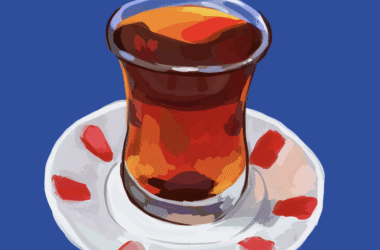“Tadpole biting the wax.” Not really an appetizing name for the sweet fizzy drink known as Coca-Cola, which is exactly why the Atlanta, Georgia soft drink giant spent loads of money researching a new name for Coke in China, one that would mean “tasty and amusing.” Although “tasty” to North American populations, greasy burgers and chicken nuggets were not the ideal food to sell to the largely vegetarian population in India, so McDonald’s catered to the public with a menu full of spicier dishes with less meat.
Unlike McDonald’s, Coca-Cola has been able to find international markets without changing anything about the product itself. Coca-Cola’s global success lies in the company’s ability to create a flawless marketing campaign that molds to each different country, fitting its culture like a glove. The newest Coke commercial in India, for example, features the Brad Pitt of India scarfing down a plate of unbearably spicy samosas, calling out for Coke and refusing water while sweat runs down his tomato red face.
Chinese Coke commercials, on the other hand, are extremely flashy, featuring a pair of male and female singers. “They get people’s attention,” says Lorraine Wong, a McGill student from Hong Kong. Here in North America, Coke is advertised with the famous polar bear commercials and a slogan that engraves the brand name in the consumers’ minds: “Coca-Cola-Always.”
When asked about the ads for Coke in her country, Panama, Denise smiled and replied, “I cannot remember, but they are always the best.” Coke ads expertly cater to their target audience. “What you do is take an idea and root in a cultural circumstance,” says Professor Karl Moore of the Desautel’s Faculty of Management.
By constructing customized Web sites for each and every country where it sells products, Coca-Cola has created an interactive wavelength through which customers can be more connected to the magical black fizz. The Chinese Web site is flashy and advertises the latest gizmos and gadgets, ideally suited to a technology-loving culture. European and Latin American Web sites have special links to football stats and online games, so that football aficionados can check on the English Premiere league while drinking an ice cold Coke. The Indian Web site has information on both current Bollywood blockbusters and cricket scores, appealing to a generation of young movie goers and older cricket watchers alike.
Coke, therefore, is a cultural symbol as well as a sugary soft drink. In India, the images of Coca-Cola and spicy food are inseparable. Meanwhile, in North America, Coke is “classic.” Around Christmastime, people keep an eye out for the Santa Claus bottles, and the penguin ads, which are appealing because they are fantastical. What could be better than a relaxing sip of Coke in the midst of pre-holiday stress? Coke ads are so successful because they embody the art of advertising at its finest; no matter what country you live in, the stuff in the red can has the capacity to make you smile.
The only problem with Coke’s marketing plans may be that people are not “region specific” anymore. With a world that is becoming smaller and smaller as each plane takes off at the airport and each email is sent half way across the world, global marketing is inevitable and much more cost efficient. But will the whole world eventually see the same commercials? Probably not.
“We are seeing more Indian faces in commercials in India, more Chinese faces in commercials in China,” says Moore. Why this change in the face of globalization? People, he says, are becoming “winged and rooted and multi-cultural. As people become more global they are also becoming more local.”
Coca-Cola has a plan to take the multicultural world by storm, globalize and yet somehow stay “local.” There is only one slogan for the world, but there are unique commercials and Web sites that will continue to suit the cultures they serve. Coke’s new slogan is “the Coke Side of Life,” a global marketing effort asserting that life from “the Coke side” is more optimistic. “Coke is selling emotions,” claims Moore.
Indeed, Coke is selling happiness in a bottle-the cure for all of life’s problems. The execs at Coca-Cola have made a golden lifestyle out of carbonated water, corn syrup and a little bit of artificial flavouring.






